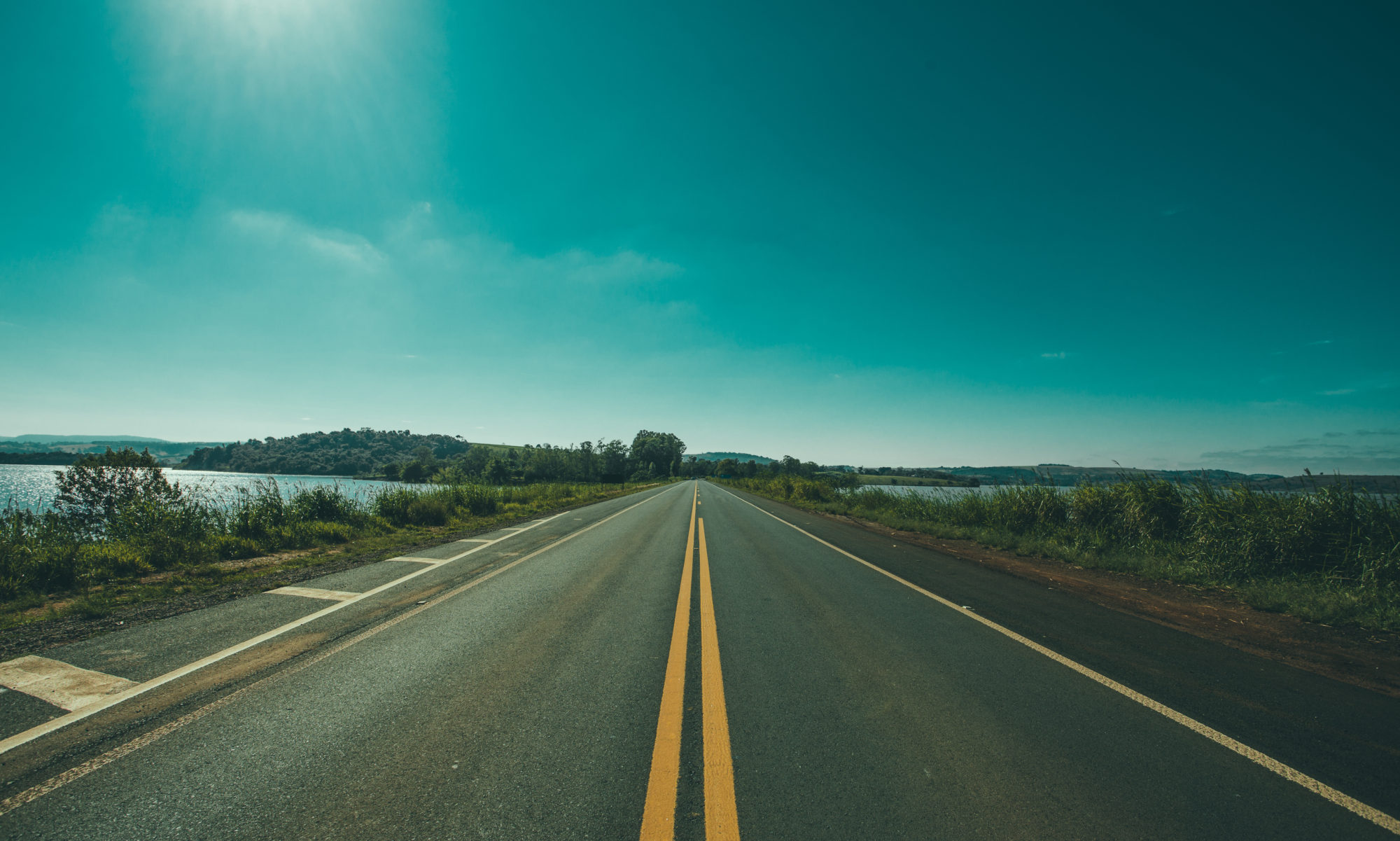One morning, we set out on foot for a Nile-side stroll. Like Alexandria, central Cairo has lots of Italian/French-style apartment buildings in various states of dilapidation.
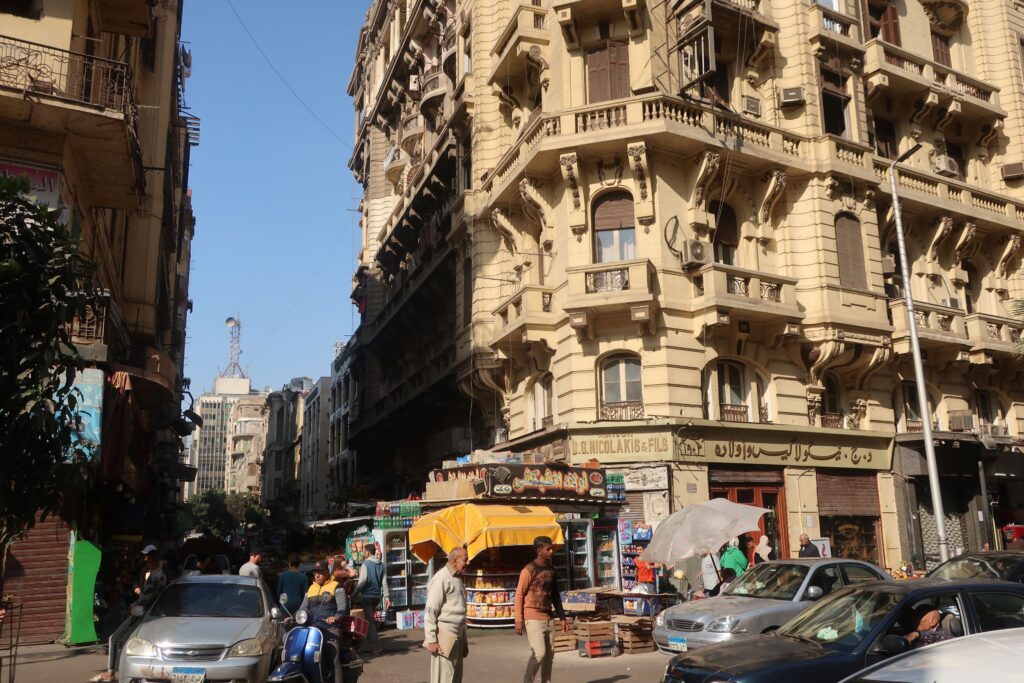
Along the way, we stop for an excellent coffee in this place. The staff are very friendly and the coffee is superb, with some added exotic spices.
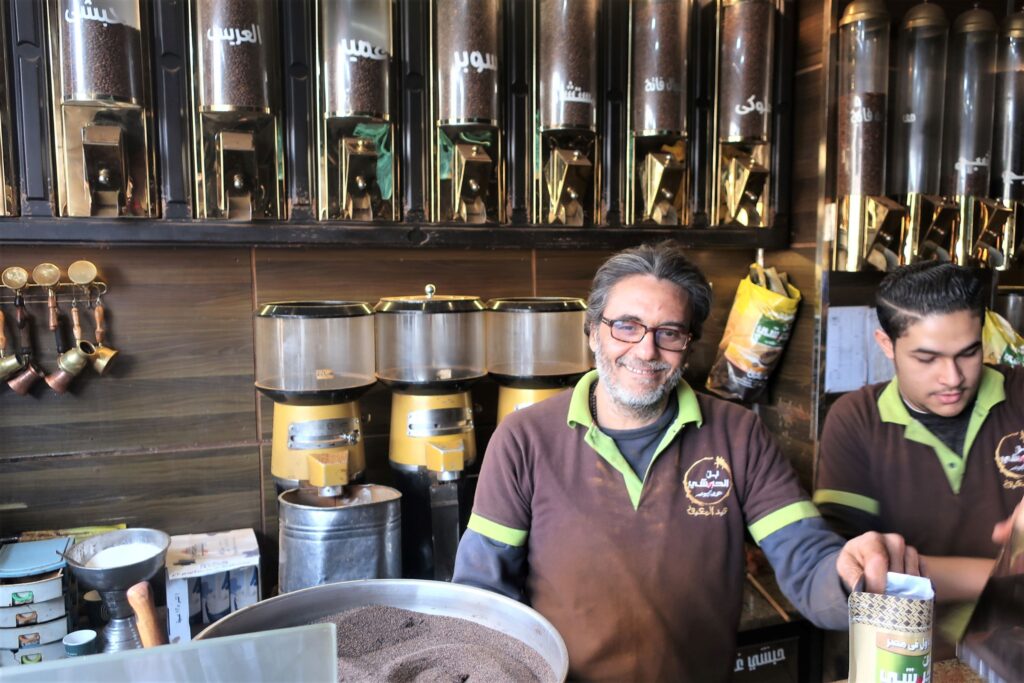
We pass this office, wondering if it’s a serious government department. Elections here exist only to confirm that whoever happens to be president stays in office until Hell freezes over.
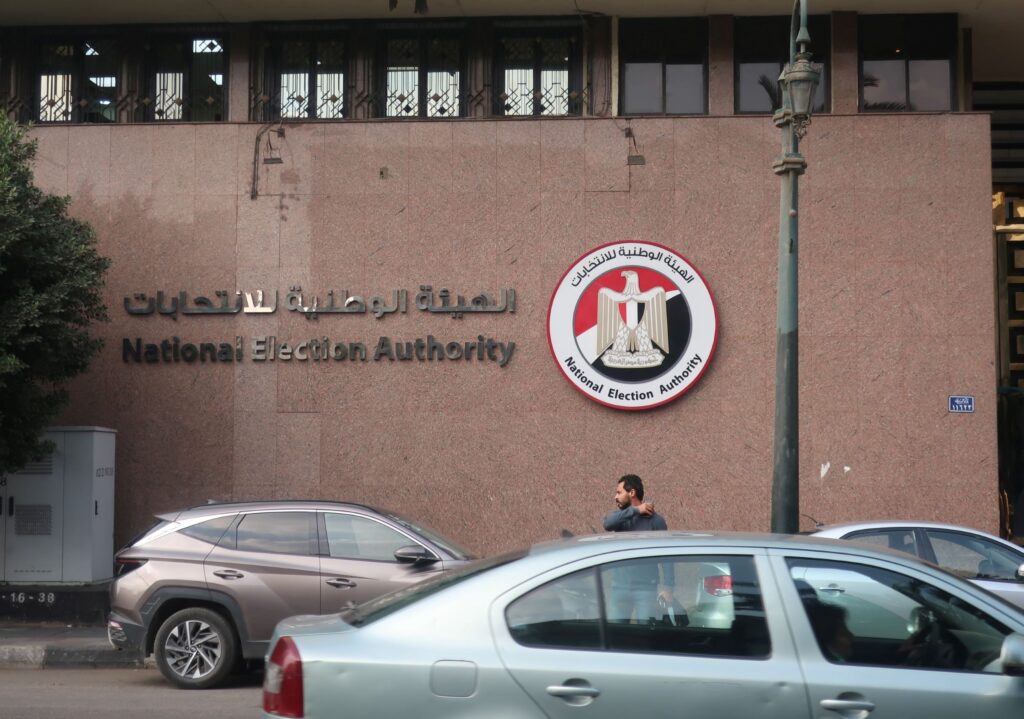
We walk to the southern tip of Rhoda Island.

We’ve come to see the Nilometer on the southern tip of the island..
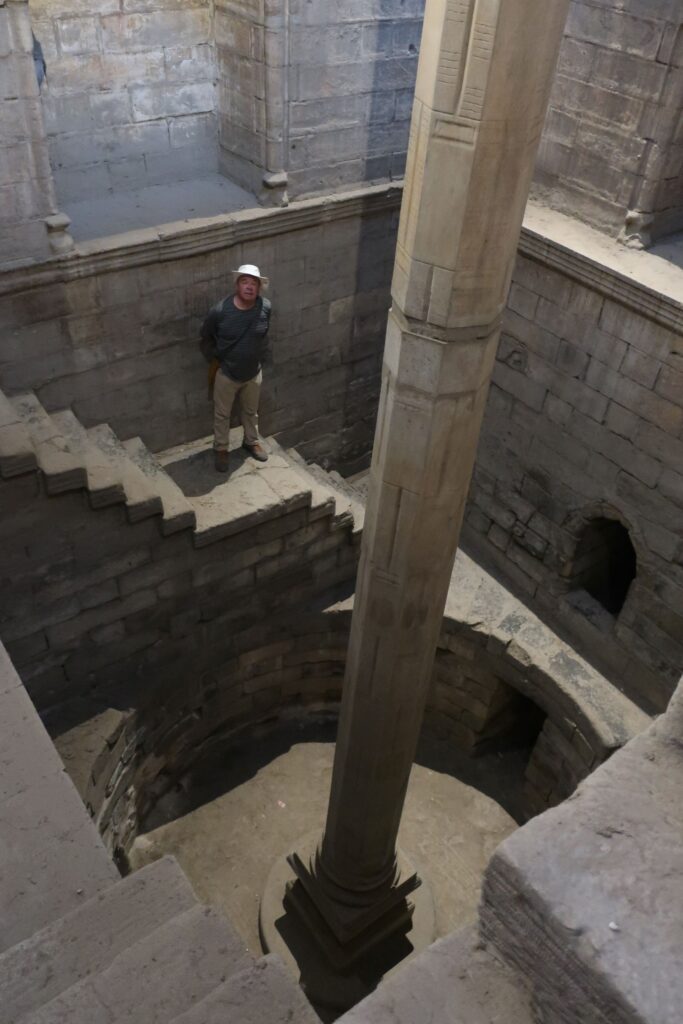
The pillar dates from the ninth century, I think . The decoration up top is nice, too.
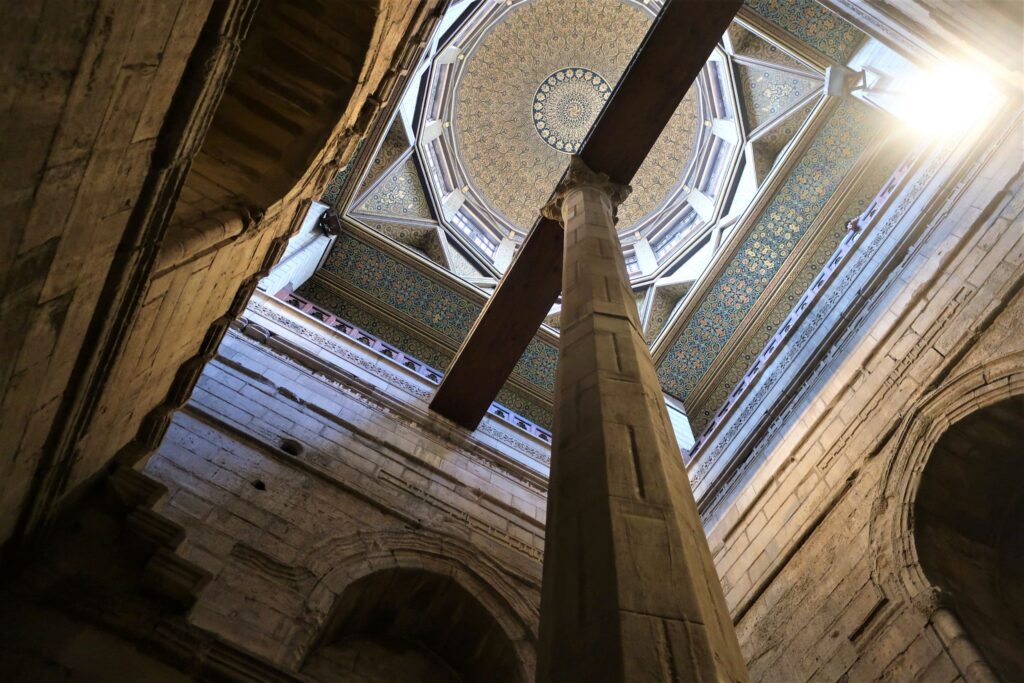
Next door is an exhibit on the life of Umm Kulthum, an Egyptian singer of mythic fame in the Arab world. Even young Egyptians hold her in high regard. Personally, I think her habit of hobnobbing with Egypt’s dictators detracts from the ‘woman of the people’ schtick.
Zamalek is a ritzy neighbourhood on Gezira Island where we go in search of a Fair Trade gift shop.
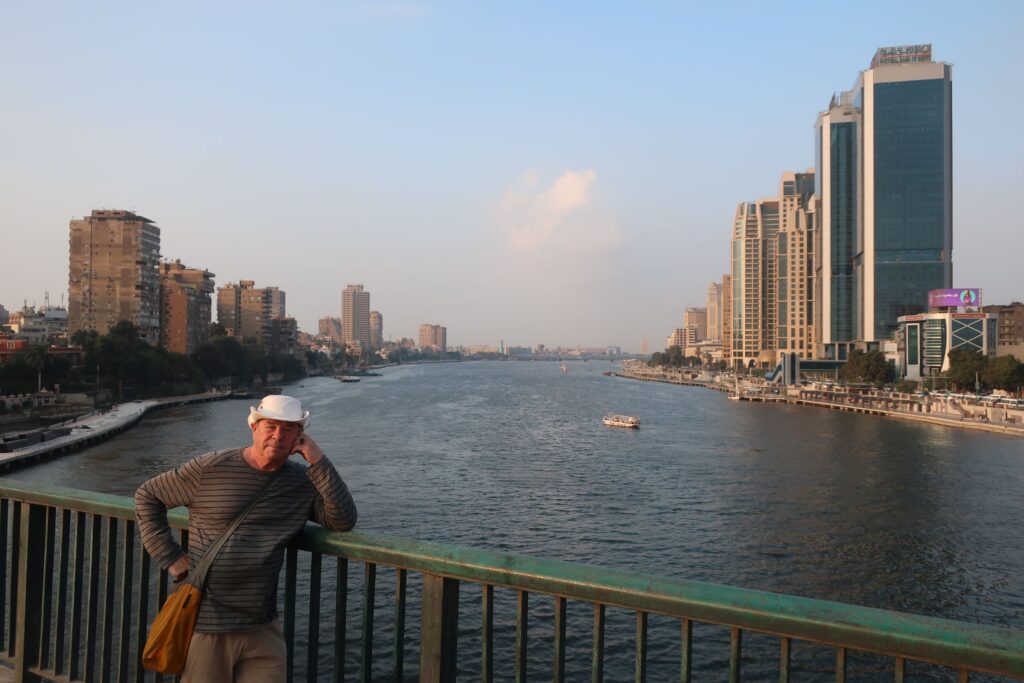
On the long walk home, the riverside promenade is full of rollerbladers.
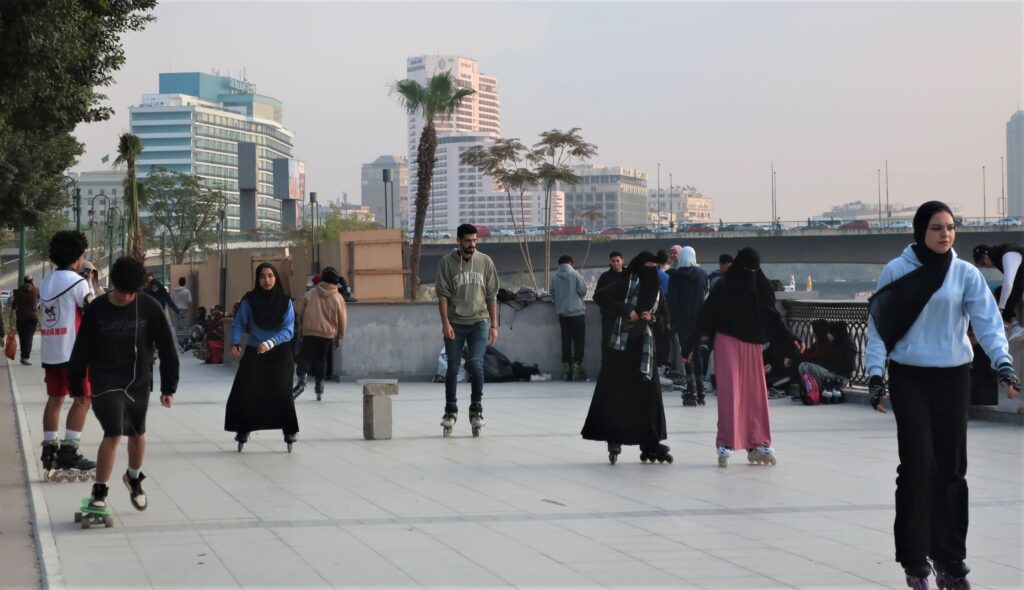
Next day, we visit the Mosque of Ibn Tulun. According to wikipedia:
‘It was designed by the prominent Egyptian architect, Saiid Ibn Kateb Al-Farghany, who was an Orthodox Christian, the same engineer who designed the Nilometer. The mosque’s original inscription slab identifies the date of completion as AH 265 (878/879 AD).’
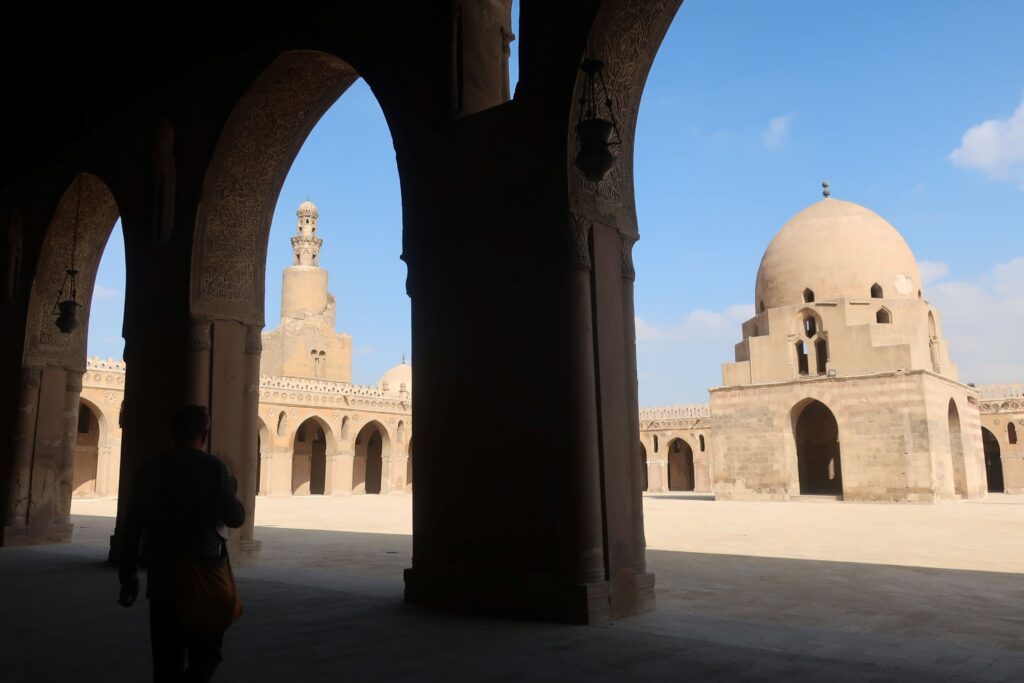
This dove finds a perfect place for a nest in a mosque lamp.
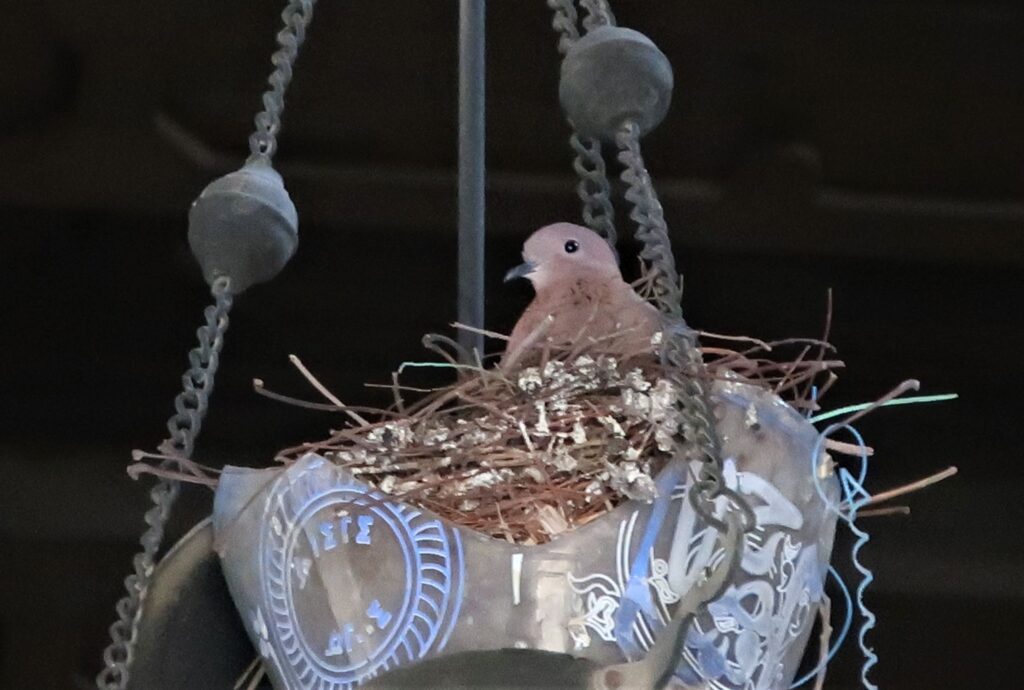
The mosque has an unusual spiral minaret. For a nominal fee, an attendant lets us climb to the top.
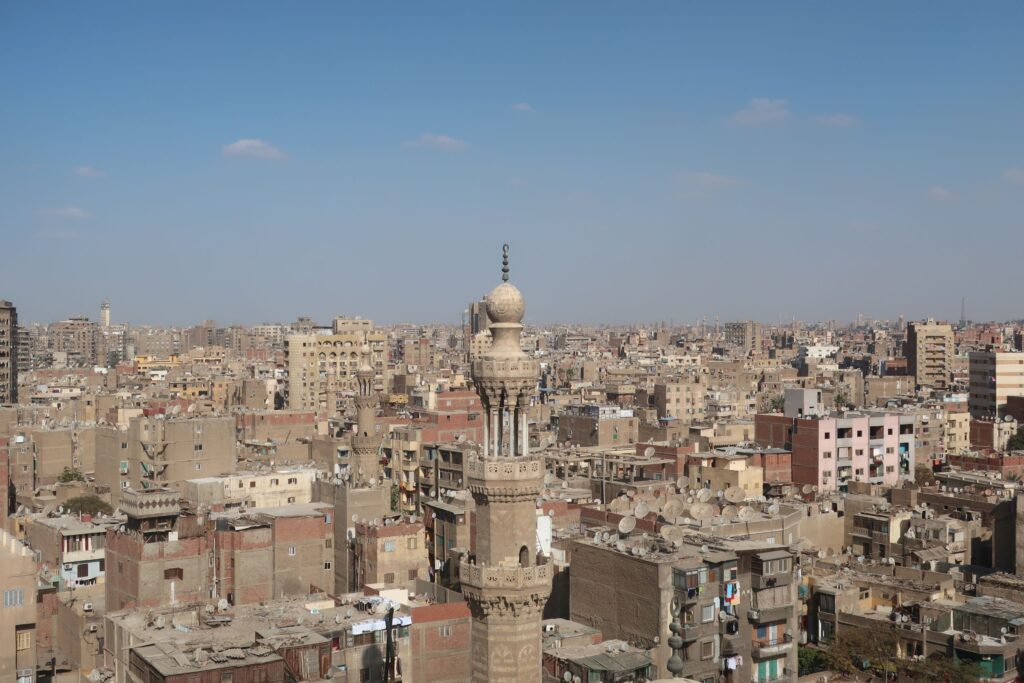
Our next stop is the Museum of Islamic Art. Our route takes us through some picturesque neighbourhoods.
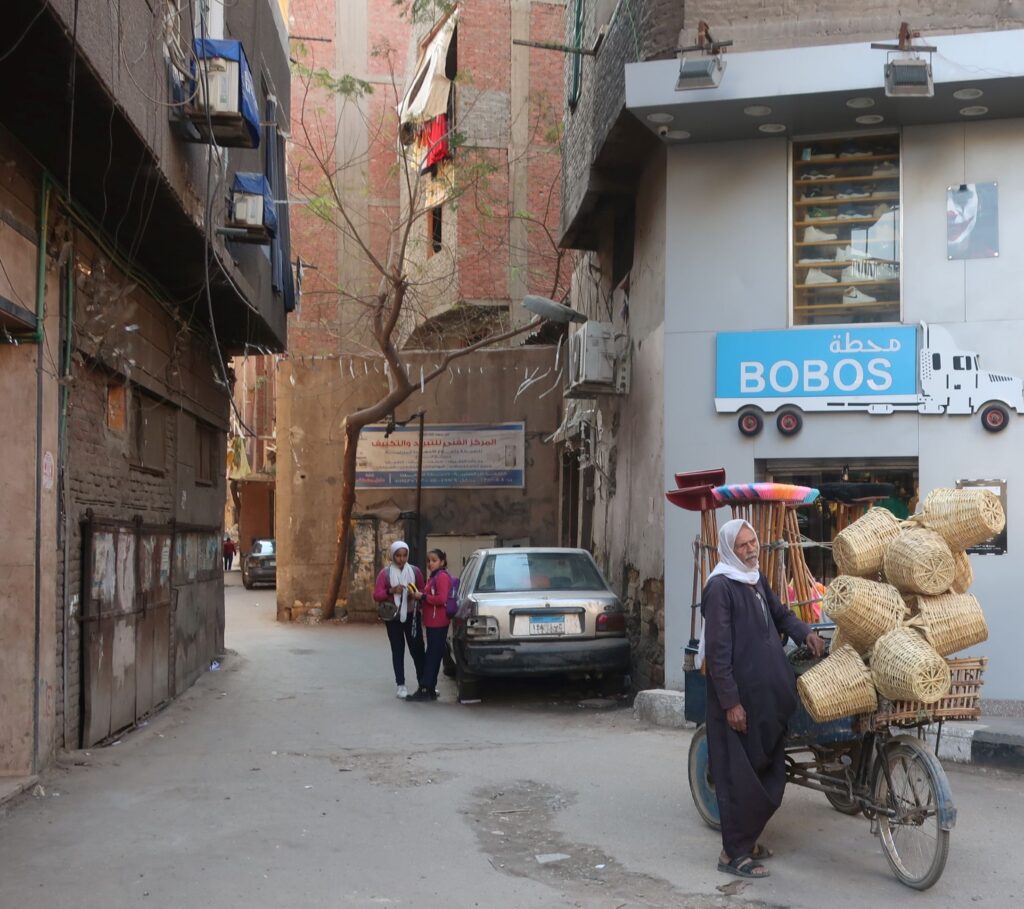
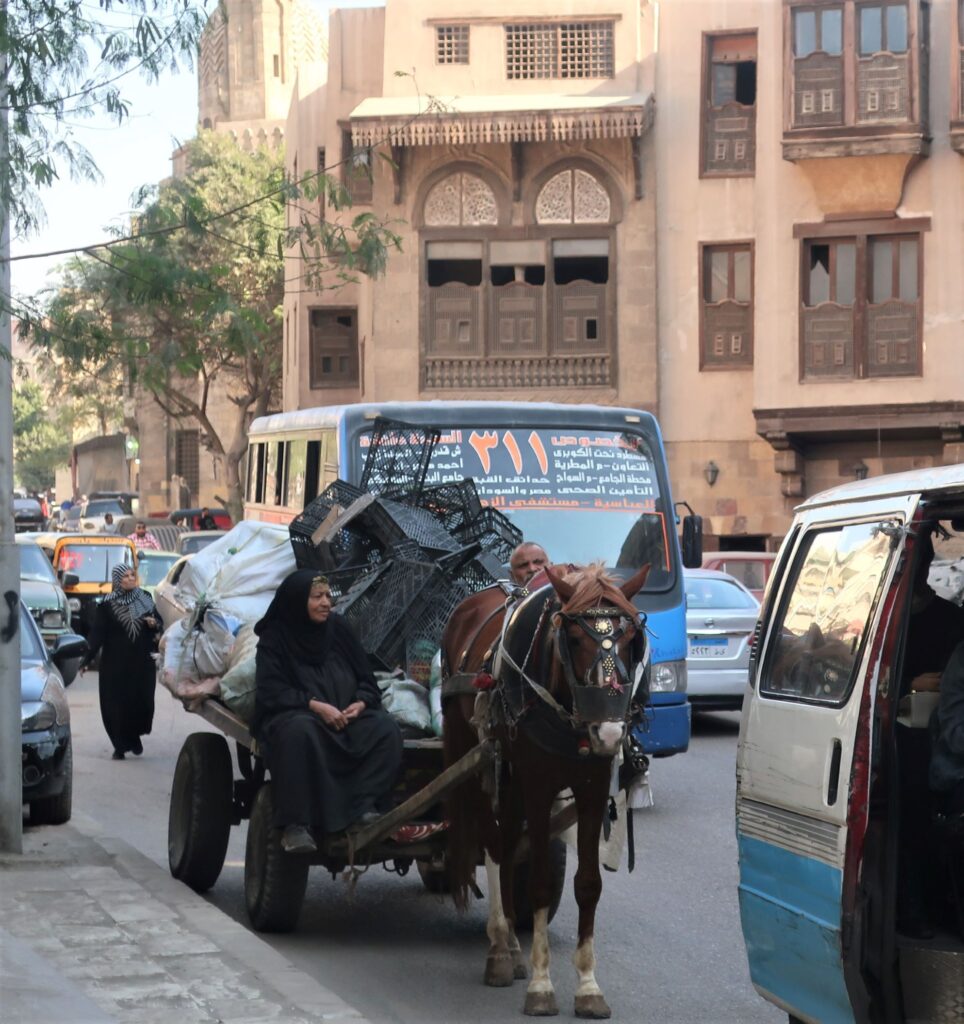
The imposing Cairo Citadel. We give it a wide berth because the army still uses it, so we’re told.
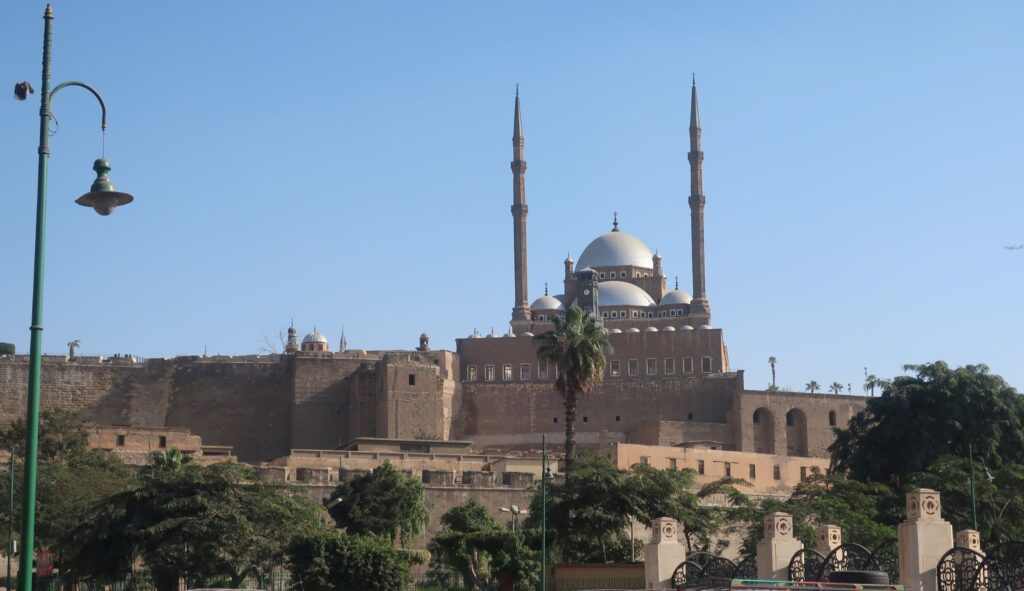
Around the corner from the museum, we admire this street dog that has found a good place for a snooze.
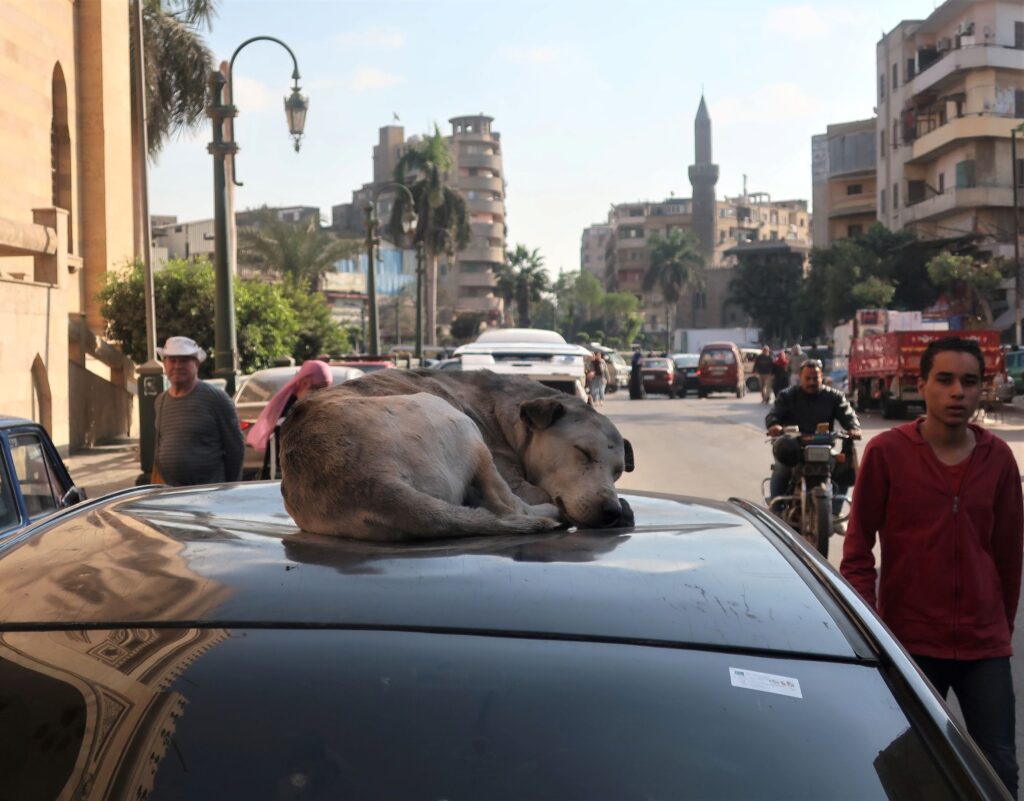
The Museum of Islamic Art has a well-curated and well-displayed collection of Islamic goodies.
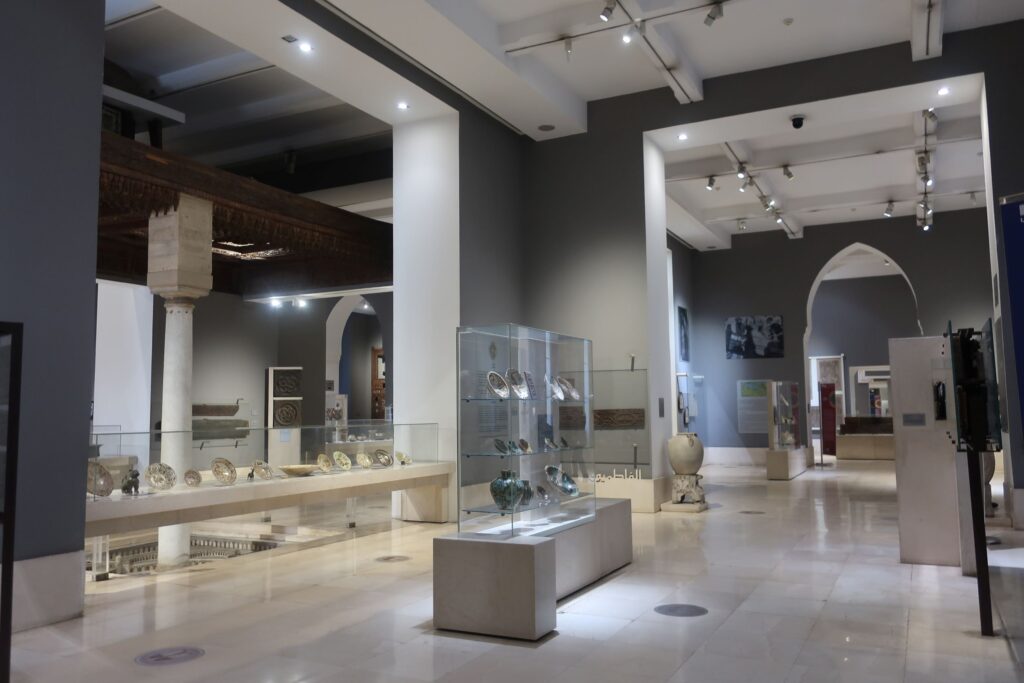
Our last full day in Cairo. We start with the National Museum of Egyptian Civilization, which opened in 2021.
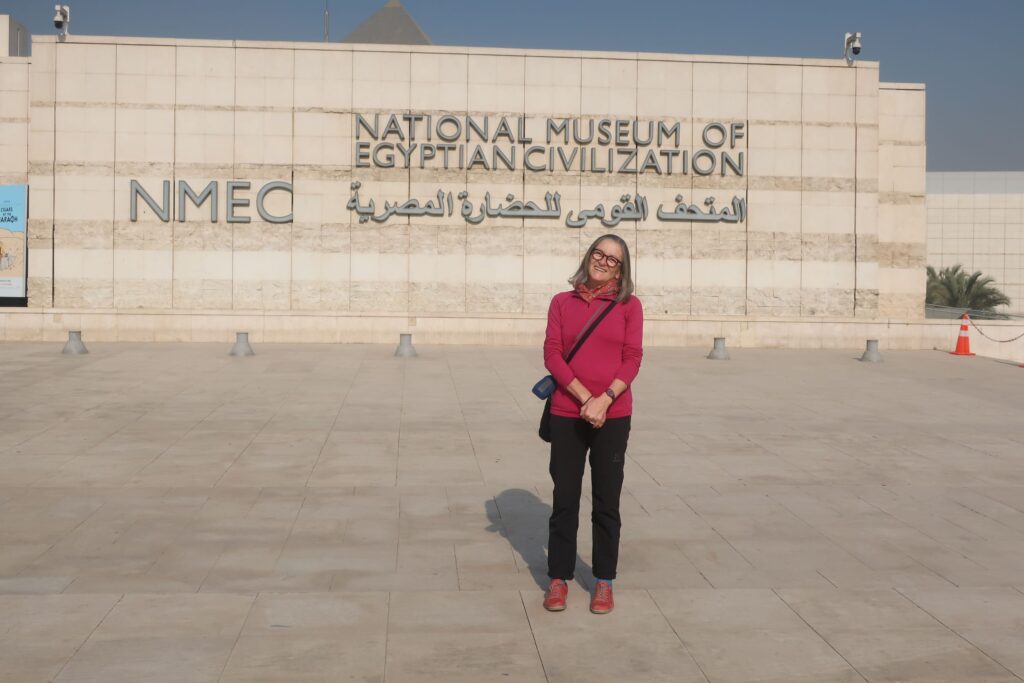
An apropos temporary exhibit features Tintin and Snowy in an entertaining Orientalist fantasy.
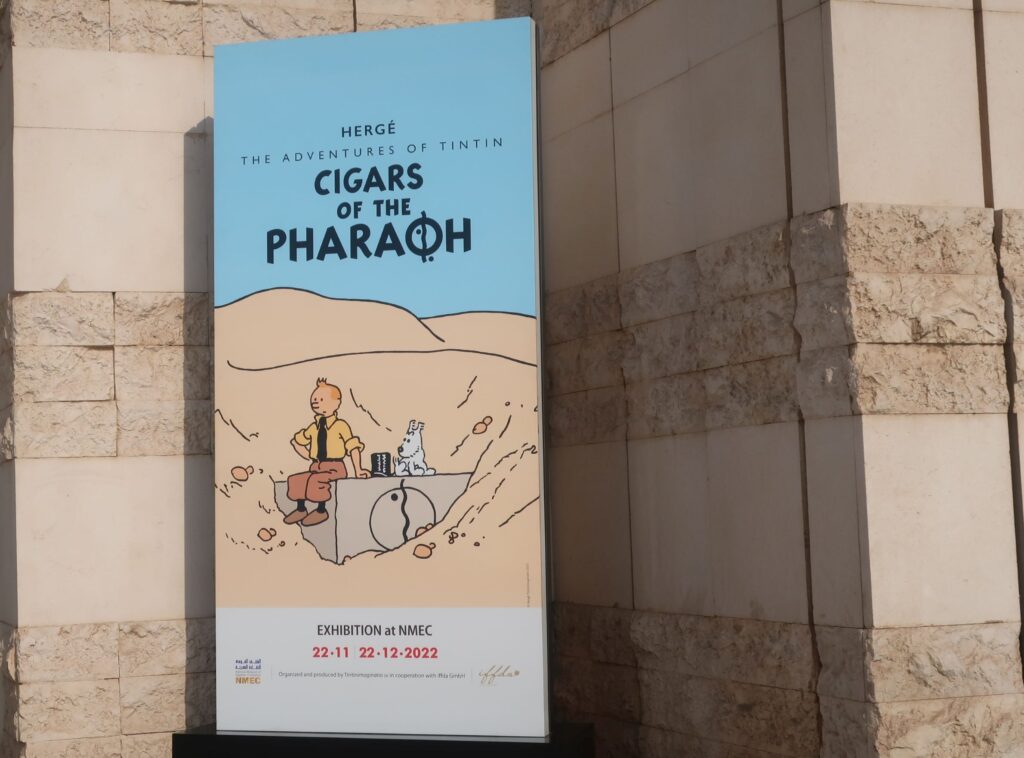
The most impressive exhibit (for me) were the tastefully arrayed 22 royal mummies, including such powerhouses as Ramses II and Hatshepsut (no photos allowed.) It’s fascinating to see the actual frail, shrunken remains of these rulers that constructed colossal edifices – some of which we’ve seen – and loom so large in Egyptian history.
The rest of the museum is thankfully sparse in quantity but very good in quality.
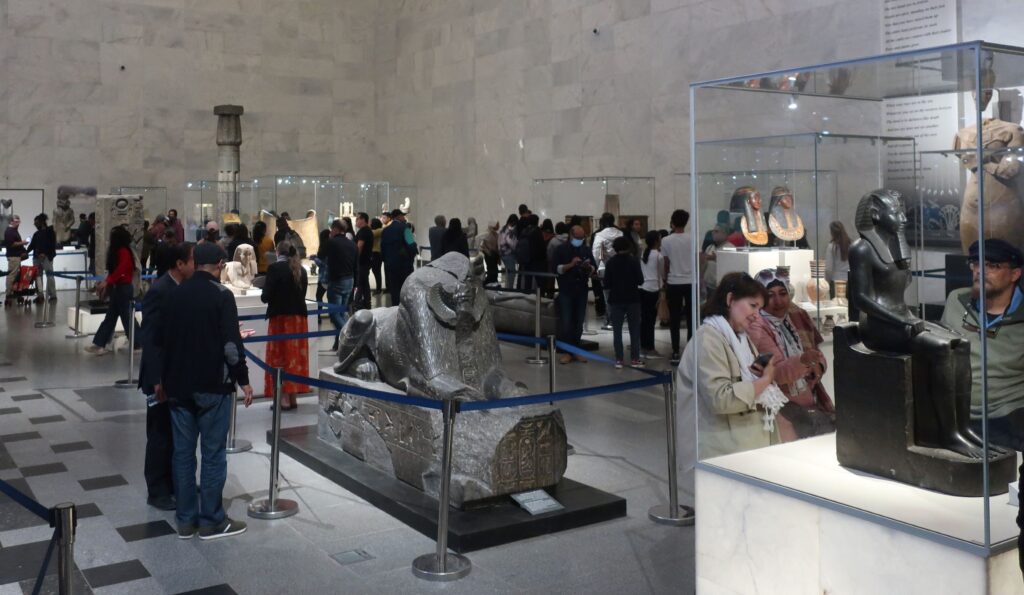
Besides having a pleasant restaurant, the museum also has nice grounds to enjoy.
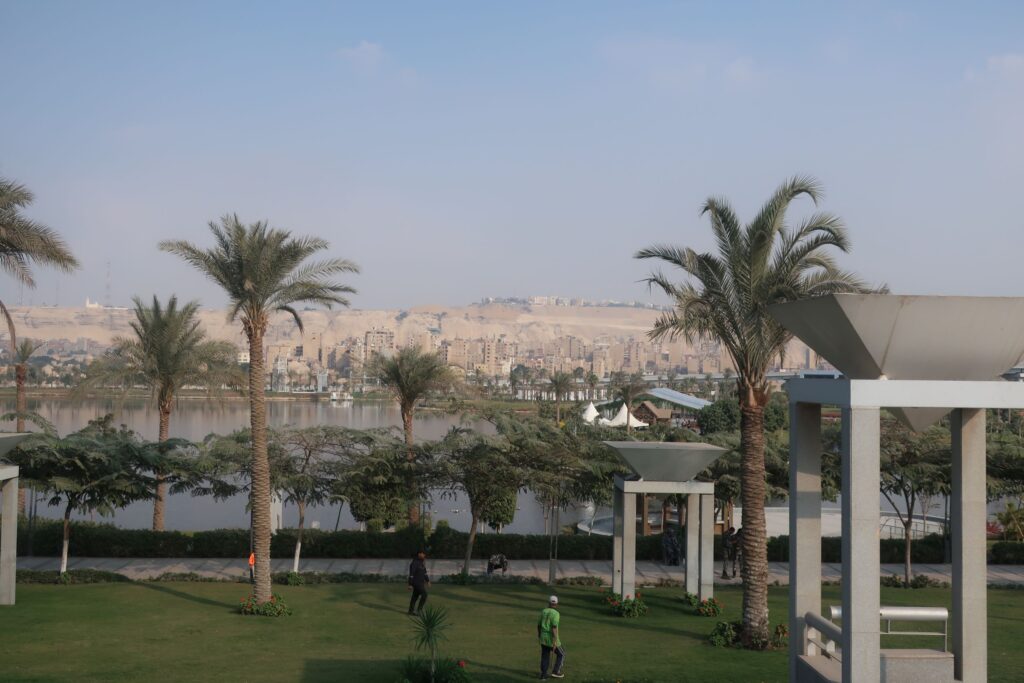
From the New to the Old. Our last visit of the day is back to the Medieval part of town. We take an Uber to the Bab al-Nasr for a last wander around the Khan el-Khalili market.
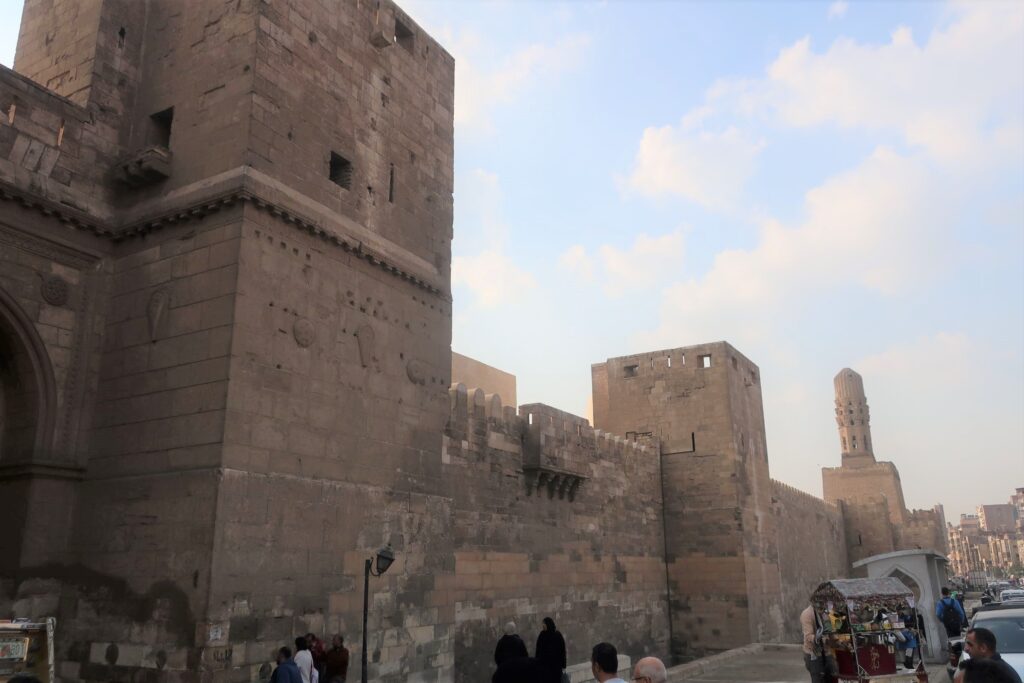
Sight or Insight of the Day
While having lunch in the chic restaurant of the National Museum of Egyptian Civilization, the party at the next table catch my attention. There is a very debonair-looking Australasian gentleman who looks familiar. He’s well-dressed, clear-spoken, and confident. He wears an Akubra hat at a jaunty angle. His entourage is well-behaved. They get up to leave.
It’s uncharacteristic of me, but I just have to ask, otherwise I’ll never know. ‘Excuse me. Are you Sam Neill?’

‘No, I’m afraid not‘, he replies.
‘I’ll bet you get asked that a lot‘ I say.
‘Actually, no‘ he deadpans ‘I’m usually mistaken for George Clooney or Brad Pitt.‘
